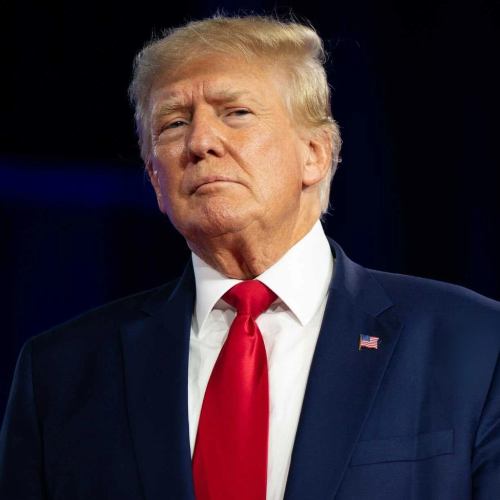The incoming Trump administration, set to take office in January 2025, is preparing for a shift in U.S. foreign policy. This recalibration aims to refocus the United States’ role in the world, prioritizing pragmatism and strength. As the country pivots to more realistic and restrained foreign strategies, the spotlight is on several crucial regions, including Taiwan, Greenland, and the Panama Canal. Each of these areas plays a key role in the global competition for resources, trade routes, and political influence, particularly in relation to China. These locations have become central to the Trump administration’s foreign policy discourse, emphasizing military, economic, and strategic objectives.
Taiwan: A Crucial Point of Tension in the Indo-Pacific
The United States and China have long been at odds over Taiwan. The U.S. has supported Taiwan under the Taiwan Relations Act since 1979, ensuring the island has the means to defend itself. However, balancing this support while maintaining peaceful relations with China has become more complex as tensions in the region rise.
The U.S. has traditionally followed a policy of “strategic ambiguity,” avoiding a clear commitment on whether it would defend Taiwan in the event of an attack from China. This approach has been effective in preventing extreme actions from both sides, but some analysts now believe a shift to “strategic clarity” may be necessary to better emphasize Taiwan’s defense capabilities.
Taiwan is not only politically significant but also a critical player in global trade and security. Its semiconductor industry is essential for the production of advanced military systems, including U.S. missiles and weapons. As such, the U.S. must carefully navigate its approach to Taiwan to avoid disrupting vital supply chains while ensuring regional stability.
Greenland: A Strategic Asset in U.S. Foreign Policy in the Arctic
Greenland, an autonomous territory of Denmark, is strategically important due to its location in the Arctic and vast reserves of rare earth minerals and hydrocarbons. With climate change making the Arctic more accessible, the island’s resources are increasingly attracting attention from global powers, particularly China and Russia. Greenland’s position as a resource hub and military asset makes it a key focus for U.S. foreign policy.
The U.S. has long considered Greenland of strategic value, dating back to World War II when military bases were established to prevent enemy control. During the Cold War, its military significance grew, with secret bases housing nuclear weapons. While its military importance waned after the Cold War, Greenland’s role has been revitalized with the shifting dynamics in the Arctic, particularly in terms of resource extraction and geopolitical influence.
In recent years, the U.S. has sought to strengthen its ties with Greenland, even exploring the possibility of purchasing the island in 2019 and revisiting the idea in 2024. Although met with resistance, this reflects the U.S.’s longstanding interest in the region, particularly to counter Chinese and Russian influence. Strengthening partnerships with Greenland and Denmark, investing in infrastructure, and ensuring military access are key to maintaining U.S. dominance in the Arctic.
Panama Canal: A Gateway to Global Trade and Security
The Panama Canal has long been one of the most critical pieces of infrastructure in global trade. Ships sailing between the Atlantic and Pacific Oceans can take a shortcut because to this waterway. The canal is essential for the U.S. economy, as it facilitates the movement of goods and military vessels. Over the years, however, China has expanded its influence in Panama, investing heavily in infrastructure projects and acquiring key assets around the canal.
In recent years, China has invested billions of dollars in Panama, including purchasing land for port development and constructing new infrastructure projects. Chinese companies have also gained control over major ports along the canal, further deepening their presence in the region. This growing influence in Panama has raised concerns within the U.S., which has historically viewed the canal as a vital strategic asset.
Under the Neutrality Treaty of 1977, the U.S. retains the right to use military force to defend the Panama Canal and maintain its neutrality. However, as China continues to expand its influence, the U.S. faces the challenge of maintaining control over this critical passageway without resorting to military intervention. Strengthening relationships with Panama, investing in the region’s infrastructure, and countering Chinese influence through partnerships are crucial for securing interests of the United States in the canal and preserving its position as the leading nation in the Western Hemisphere.
Key Foreign Policy Strategic Flashpoints
The Panama Canal’s role in global trade and security makes it a critical asset for the U.S. The Trump administration will need to balance diplomacy with military readiness, ensuring that the canal remains a secure and reliable route for global commerce while preventing external powers from exerting undue influence.
Taiwan, Greenland, and the Panama Canal are all vital to U.S. foreign policy, each playing a significant role in global trade, security, and competition. These regions are essential to maintaining U.S. foreign policy influence and countering the growing power of China and other global players. As the Trump administration prepares to take office, it must carefully navigate the challenges presented by these key geopolitical flashpoints. By focusing on diplomacy, economic investments, and military deterrence, the U.S. can secure its interests while avoiding unnecessary conflicts and maintaining its global leadership.

